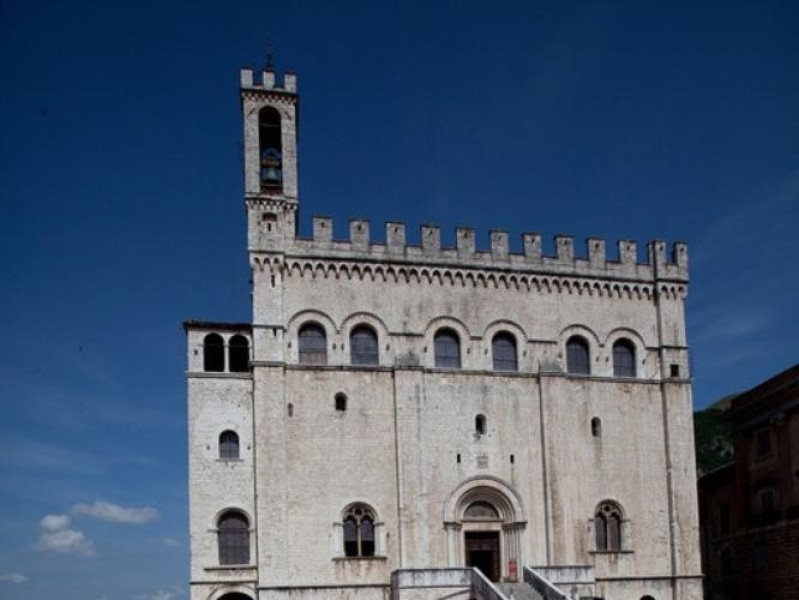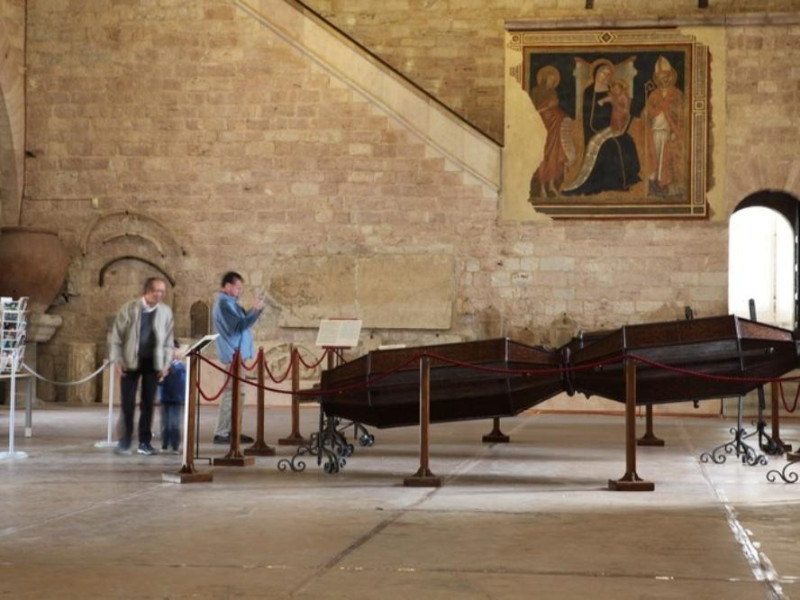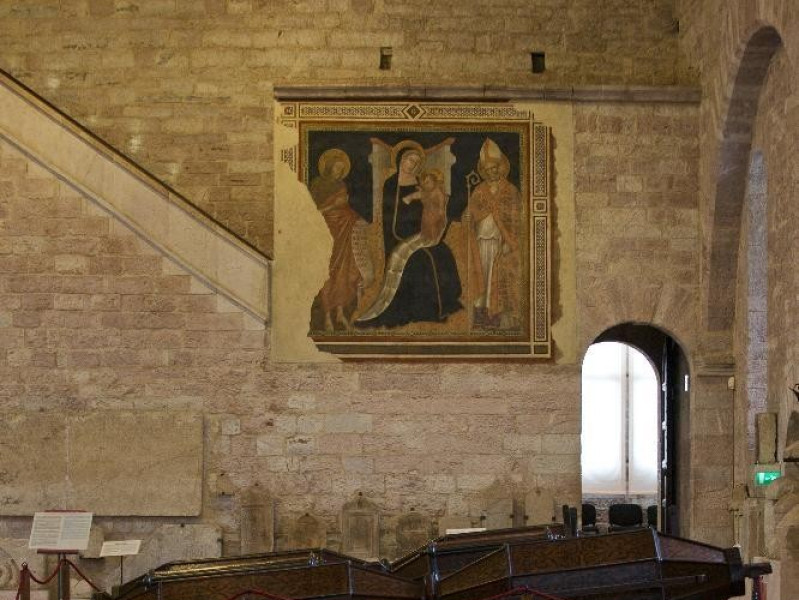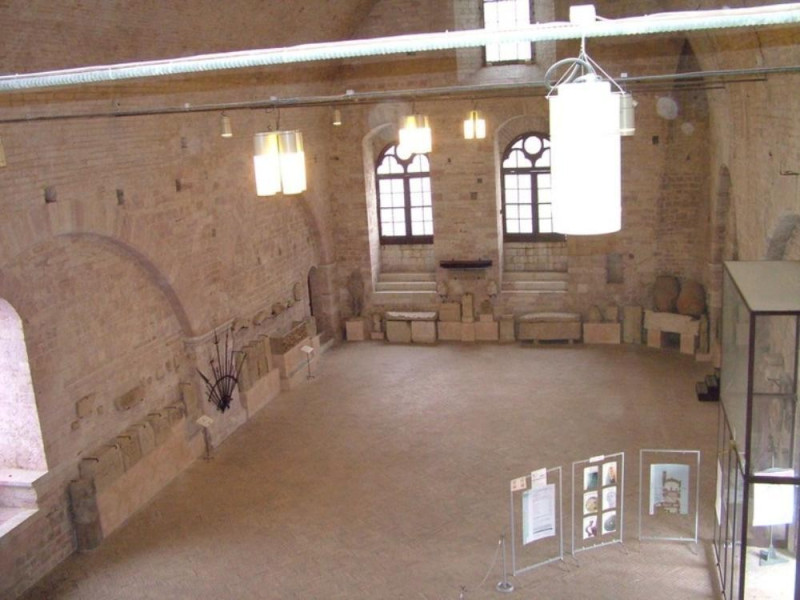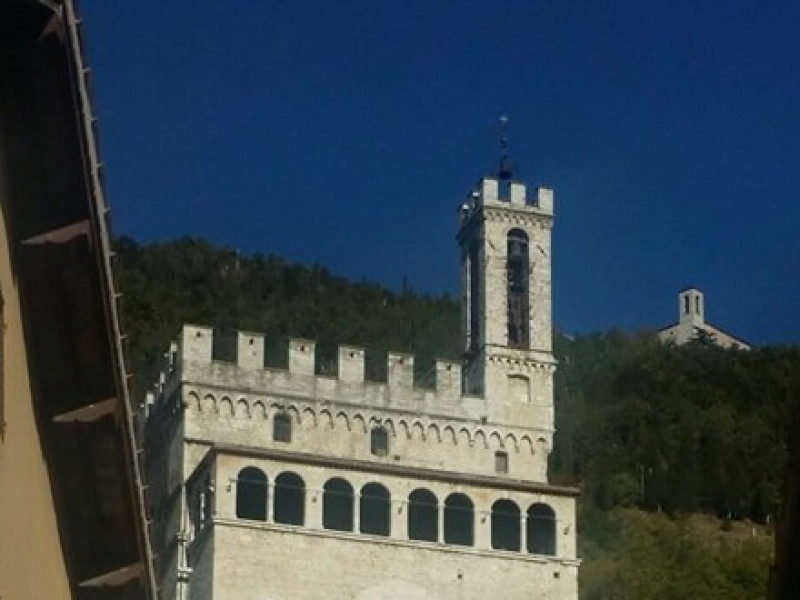Palazzo dei Consoli
The Palace of the Consuls The Palazzo dei Consoli is clearly visible from a long distance and stands in the historical city center of Gubbio. Its façade overlooks Piazza Grande, a highly elevated terrace, and political fulcrum of the 14th century town. Today, this building is the seat of the Civic Museum, where it is possible to admire the Egubine Tablets, a precious bronze evidence of the Umbrian language. The palace was built, between 1332 and 1349, based on a design of Angelo da Orvieto—remembered with an inscription above the entrance door—with the contribution of Matteo di Giovannello, known as the Gattapone. Its Floor Plan is rectangular, and its facade possesses a great Gothic verticality accentuated by lesenes—which are low-relief pillars resembling pilasters—dividing its front into three separate parts. The first order is dominated by the portal, to which access is gained through a fan shaped staircase; in the lunette above the door there is the 1495 fresco of Bernardino di Nanni dell’Eugenia, depicting the Madonna with Child between SS Johan the Baptist and Ubaldus. The painting was heavily modified in the 16th century by Benedetto Nucci. Two mullion windows—each surmounted by a round arch—open on both sides of the portal. The second order is decorated with six round arch windows with an indented frame—corbelled table—frieze connecting the arches. A crenellated parapet supported by a corbel table made of ogival arches crowns the palace, while a Bell Tower rises on its left side. The façades on the right and the backsides of the palace, both visible from Via dei Consoli, maintain features similar to the main one. On the left side, another edifice-body, with a portico descending into Via Baldassini, was built against the main-body of the palace. The Arengo Hall, in which part of the Civic Museum’s stone collection is held, is covered by majestic barrel vaults and occupies the entire first floor. Palazzo dei Consoli, like the unfinished Palazzo Pretorio, was built during the first half of the 14th century, a period of great expansion of the town. In fact, the need for adequate public space, in compliance with the political and economic power Gubbio exercised on the surrounding territory by then, was keenly felt. So, the ancient Platea Communis, that used to be slightly higher up on the hill, was abandoned and the splendid terrace was realized to absolve the role of a directional center that bordered with but was external to all the neighborhoods, thereby maintaining an independent and impartial standing in political matters.
